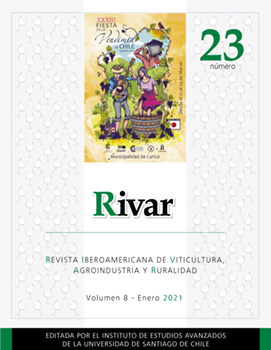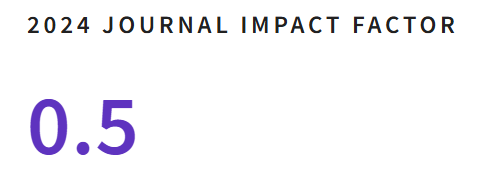Frontiers of Popular Identity in S. Sebastião Festival of Barroso in Portugal
DOI:
https://doi.org/10.35588/rivar.v8i23.4964Keywords:
customs and traditions, festivals, rural communities, agricultural products, religion, BarrosoAbstract
The synchronicity of the agrarian cycles with the festive periods of rurality in the Iberian Peninsula is a remnant of the celebration in the early days of agriculture where the gift celebrated is that of the earth. In Trás-os-Montes, particularly in the Barroso region, Portugual, a syncretism between the paganism of the land, its products and the figures of the saints, appropriated first popularly and later by canonical religion, has been fertile since immemorial times. In different towns of Barroso, Samão, Gondiães and Salto, the frontiers of popular identity between the divine and the profane are latent in the importance of the agrarian cycle and in the sacralization of their products that protects them “from plague, hunger and the war”—as goes the prayer to the patron saint São Sebastião. Through semi-structured interviews with villagers, organizers of the S. Sebastião festivities, but also with specialists in tradition, a reflection on the popular expression of the affection for their saint is proposed. The origins of the tradition in times of past anguish and especially in the communitarianism that is celebrated, define the popular identity of Barroso.
Downloads
References
Alves, VM. (2013). A Arte popular e nação no Estado Novo. A política folclorista do Secretariado de Propaganda Nacional. Lisboa, Imprensa das Ciências Sociais.
Barros, J. y Costa, SM. (2002). Festas e tradições portuguesas, Janeiro. Lisboa, Círculo de Leitores.
Cabral, JP. (1981). “O pároco rural e o conflito entre visões do mundo no Minho”. Estudos Contemporâneos 2(3): 75-100.
Coelho, AB. (2019). Comunas ou concelhos. Lisboa, Caminho.
Coelho, MHC. (2006). “O Poder Concelhio em tempos medievais - o ‘deve’ e ‘haver’ historiográfico”. Revista da Faculdade de Letras HISTÓRIA III(7): 19-34.
Costa, F. (2016). Do material ao imaterial. Procissões, festas e romarias no Almanach de Lembranças (1851-1932). Porto, Universidade do Porto.
Dias, AJ. (1990). “Uma introdução histórica à antropologia portuguesa”. En Dias, AJ. Estudos de Antropologia. Vol. I. Lisboa, Imprensa Nacional e Casa da Moeda: 2013-2229.
____. (1955). “Algumas considerações acerca da estrutura social do povo português”. Revista de Antropologia 3(1): 1-20.
Fontes, A. (2014). Etnografia Transmontana Crenças e Tradições de Barroso. Vol. I. Lisboa, Âncora.
Herculano, A. (1875). História de Portugal. 8va edición. Lisboa, Aillaud & Bertrand.
Hespanha, AM. (1982). História das Instituições. Épocas Medieval e Moderna. Coimbra, Livraria Almedina.
Leal, J. (2016). “A antropologia em Portugal e o englobamento da cultura popular”. Sociologia & Antropologia 6(2): 293-319.
DOI https://doi.org/10.1590/2238-38752016v621
____. (2010). “Usos da cultura popular”. En Neves, J. (coord.). Como se faz um povo. Lisboa, Tinta da China: 125-137.
____. (2000). Etnografias portuguesas (1870-1970). Cultura popular e identidade Nacional. Lisboa, Publicações Dom Quixote.
Marx, K. y Engels, F. (1970). The German Ideology, Part One. Nueva York, International Publishers.
Mattoso, J. (1985). Identificação de um país. Ensaio sobre as origens de Portugal 1096-1325. Vol. I. Lisboa, Estampa.
Mauss, M. (1990). The Gift. The Form and Reason for Exchange in Archaic Societies. Londres, Routledge.
Mazoyer, M. y Roudart, L. (2006). A History of World Agriculture: From the Neolithic Age to the Current Crisis. Nueva York, Monthly Review Press.
Melo, D. (2001). Salazarismo e cultura popular (1933-1958). Lisboa, Imprensa de Ciências Sociais.
Neto, SM. (1997). “A persistência senhorial”. En Mattoso, J. (dir.). y Magalhães, JR. (coord.). História de Portugal, No Alvorecer da Modernidade. Lisboa, Estampa: 152-161.
Oliveira, EV. de (1984). Festividades Cíclicas em Portugal. Lisboa, Publicações Dom Quixote.
Ribeiro, O. (1998). Portugal O Mediterrâneo e o Atlântico. 7ma edición. Lisboa, Livraria Sá da Costa.
Rocha, JA. (2019). “Continuidade e mudança nas festas de São Sebastião em Barroso”. Revista Memória Rural 2: 124-145.
Sinclair, TR., y Sinclair CJ. (2010). Bread, Beer and the Seeds of Change. Agriculture’s Imprint on World History. Wallingford, CABI.
Soares, M. (2019). “Simbólica religiosa de Trás-os-Montes: olhares transversais e perspetivas cruzadas”. Revista Memória Rural 2: 114-123.
Sobral, JM. (2007). “O outro aqui tão próximo: Jorge Dias e a redescoberta de Portugal pela antropologia portuguesa (anos 70-80 do século XX)”. Revista de História das Ideias 28: 479-526.
Sousa, BV. (2009). “I Parte – Idade Média (séculos XI-XV)”. En Ramos, R. (coord.). História de Portugal. 7ma edición. Lisboa, A Esfera dos Livros: 17-196.
Souza, RL. (2013). Festas, procissões, romarias, milagres: aspectos do catolicismo popular. Natal, IFRN.
Stocking, GW. (1982). “Afterword: A View from the Center”. Ethnos 47(1-2): 172-186.
DOI https://doi.org/10.1080/00141844.1982.9981237
Tiza, AP. (2019). Inverno Mágico Ritos e Mistérios Transmontanos. Vol. II, 2da edición. Lisboa, Âncora.
____. (2015). Inverno Mágico Ritos e Mistérios Transmontanos. Vol. I, 2da edición. Lisboa, Âncora.
Torga, M. (1978). Libertação. 4ta edición. Coimbra, Coimbra Editora.
Valério, N. (coord.). (2001). Estatísticas Históricas Portuguesas. Vol. I. Lisboa, INE.
Zeder, MA. (2011). “The Origins of Agriculture in the Near East”. Current Anthropology 52(S4): 221-235.









